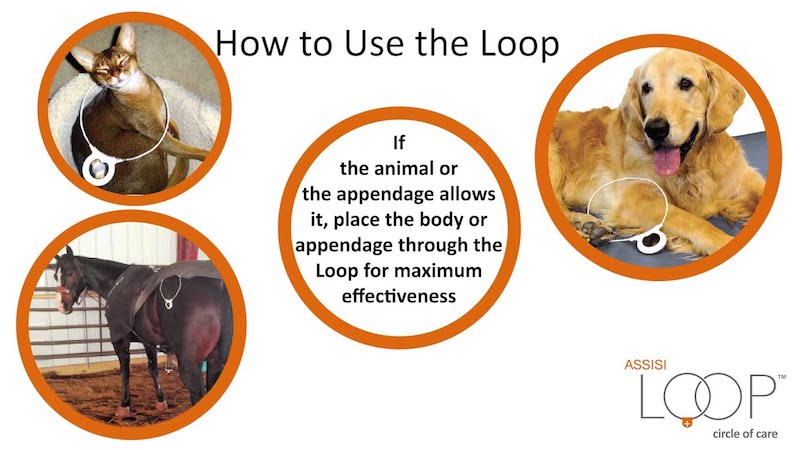
The practice of Pulsed Electromagnetic Field (PEMF) therapy is not new to the medical world. Devices like bone growth stimulators have been available as FDA-cleared devices since the 1970’s. These devices use PEMF signals that are “tuned” to target bones and increase healing in non-healing fractures.
Targeted Pulsed Electromagnetic Field (tPEMF™) signal delivers a micro-current to damaged tissue that is precisely tuned to trigger an animal’s own natural anti-inflammatory process. The electromagnetic signal, which is one-one-thousandth the strength of a cell phone, stimulates cellular repair by upregulating the body’s own production of endogenous nitric oxide (NO).
The increase in NO produced by the body as a result of the cellular reaction enhanced by the tPEMF signals causes an INCREASE in protective anti-inflammatory mediators and a DECREASE in harmful pro-inflammatory mediators (e.g. IL-6; and TNF-). This results in a rebalancing of inflammatory mediators and a reduction in inflammation.
Assisi Loop
The specific waveform Assisi has developed for Assisi LOOP® products is tuned to accelerate healing while lowering inflammation, pain, and swelling. It is a safe, effective, non-invasive, non-pharmaceutical therapy using the same technology that has been FDA-cleared for human use.
Calmer Canine
More recently, Assisi has developed a second tPEMF signal targeted to create a biological effect on the brain’s neural tissue. The patent-pending Calmer Canine® waveform targets the stress and anxiety centers in the brain, effectively reducing anxiety and restoring the animal to a calmer, more emotionally balanced state.
tPEMF signals generated by Calmer Canine work at the cellular level by controlling the activity of the microglial cells that are responsible for commanding the activities of other cells. tPEMF signals enhance the binding of Calcium to Calmodulin; this activates the production and release of Nitric Oxide (NO).
tPEMF signals also cause the neural cells to produce “feel good” substances such as serotonin, dopamine, and endorphins. Clinically, these cellular effects of the tPEMF signals translate to a reduction in the signs of anxiety, such as: less panting and pacing, less barking, howling, or whining, as well as less destruction of the home.
